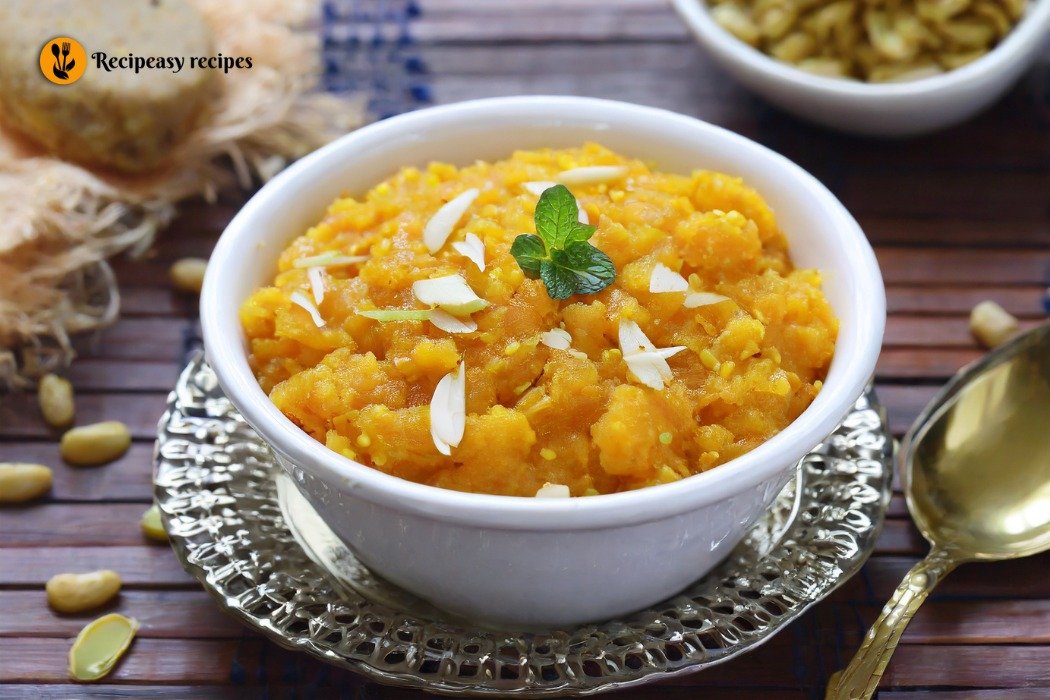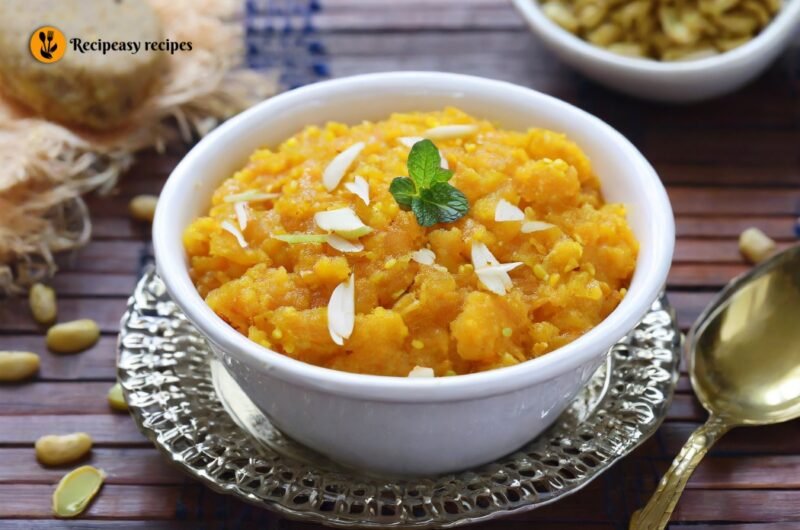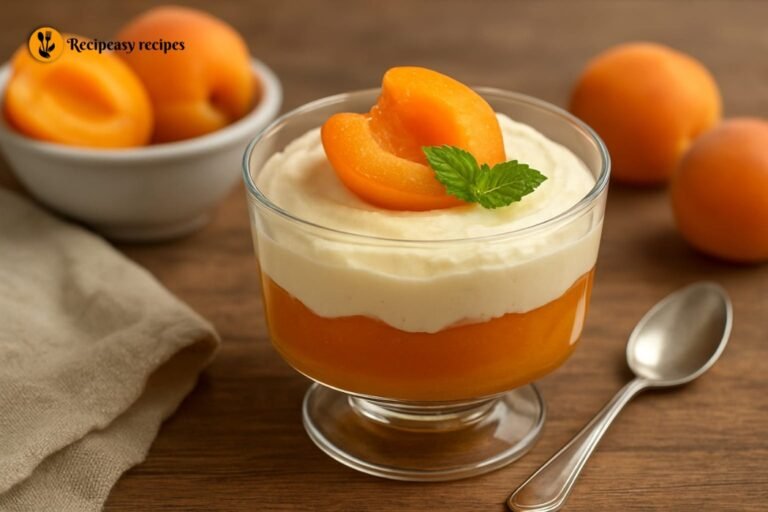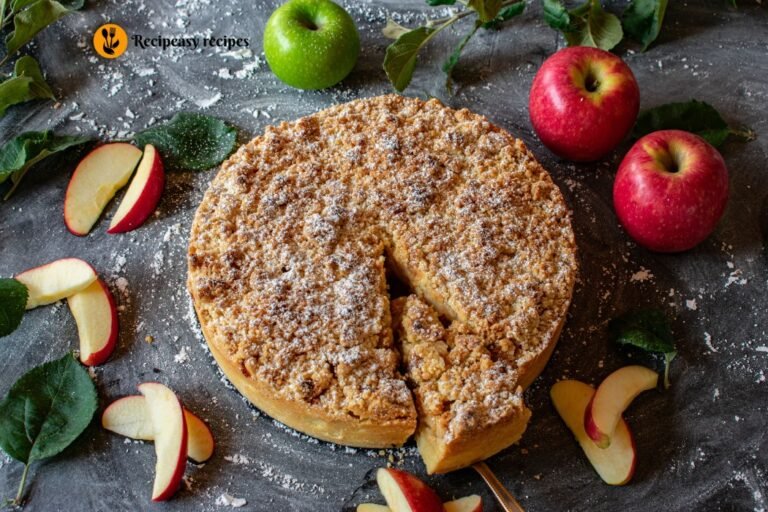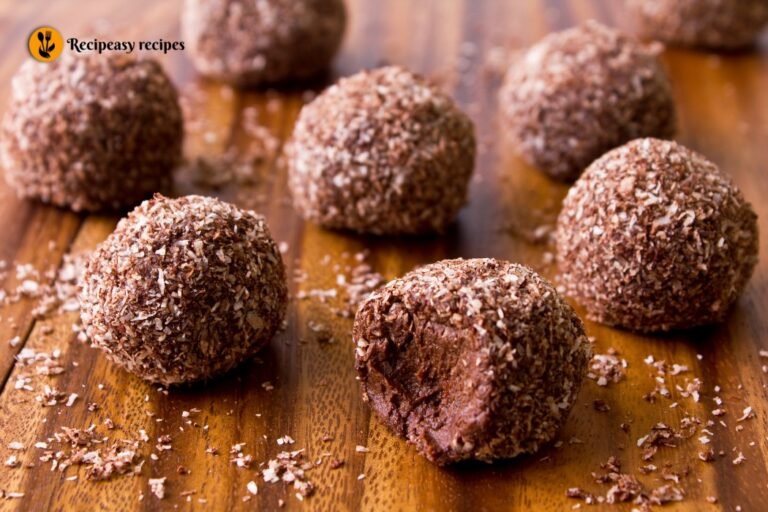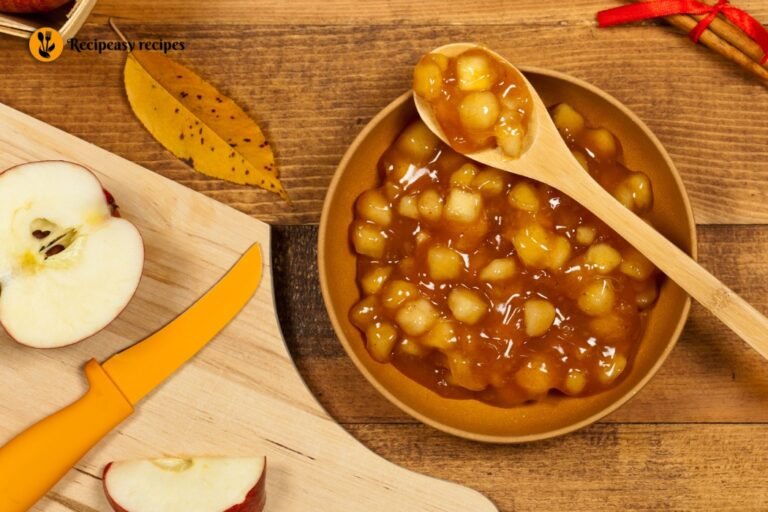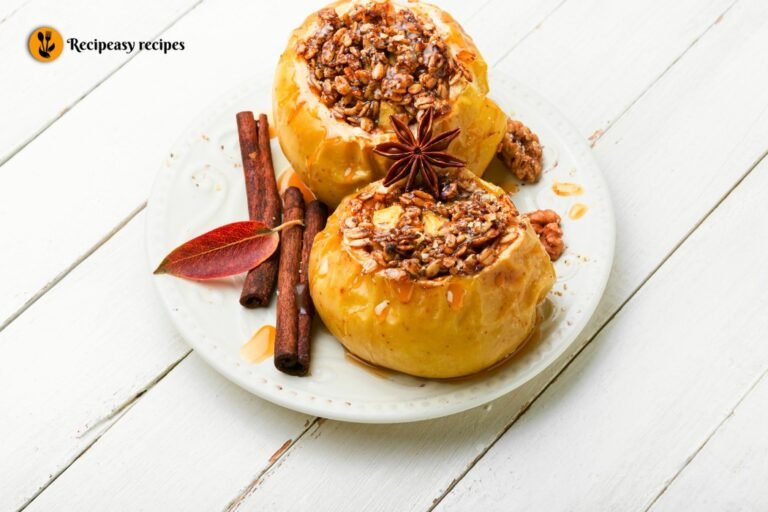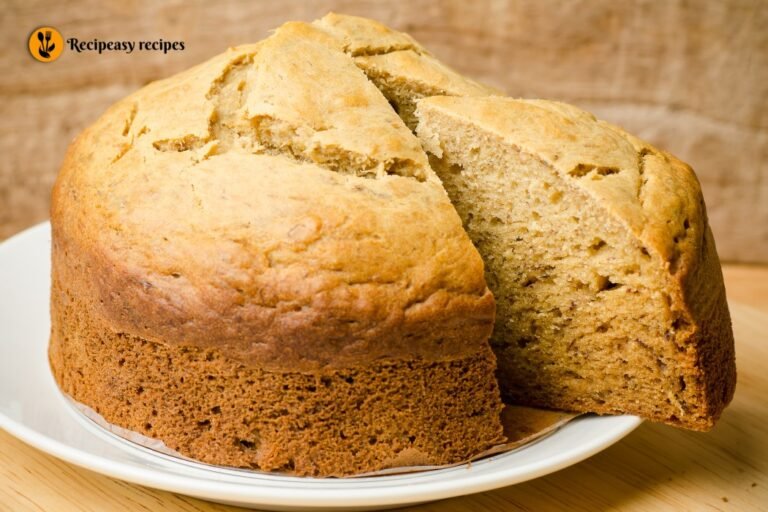Badam Halwa Recipe – Rich, Creamy & Traditional Indian Dessert
Badam Halwa Recipe is one of my all-time favorite desserts, and I recently tried making it at home. The taste was absolutely divine, rich, and aromatic a dessert that instantly elevates any festive occasion. When I made it for the first time, my family couldn’t stop praising the texture and flavor. It’s a recipe that brings warmth, happiness, and a touch of tradition to your kitchen.
What makes this recipe unique is the perfect blend of creamy almonds, ghee, and sugar, which comes together to form a soft, melt-in-the-mouth halwa. I love how easy it is to customize the texture, whether you prefer it slightly grainy with whole almonds or smooth with almond flour. Making it at home also lets you control sweetness, richness, and even the garnish, giving a personal touch to this classic dessert.
History & Origin of Badam Halwa Recipe
Badam Halwa is a traditional Indian dessert, widely loved across India and Pakistan. It traces its origins to royal kitchens, where it was prepared for special occasions and celebrations. Historically, it was considered a luxurious sweet, served during festivals and weddings for royalty and elite families. Over time, the recipe spread to households and became a staple dessert for special occasions. Its popularity continues because of its rich taste, nutty aroma, and the feeling of indulgence it brings with every bite.
What is Badam Halwa?
Badam Halwa is a luxurious almond-based dessert made with almonds, sugar, ghee, and cardamom. It is cooked slowly to develop a rich, creamy texture that melts in your mouth. There are two popular versions of this recipe: one using whole soaked almonds, and the other using almond flour for a quicker preparation. Both versions offer the same delicious taste, though the texture may vary slightly. Traditionally, it was prepared for festivals like Diwali, Eid, and special family gatherings, but now it’s easy to make at home any time you crave something sweet and indulgent.
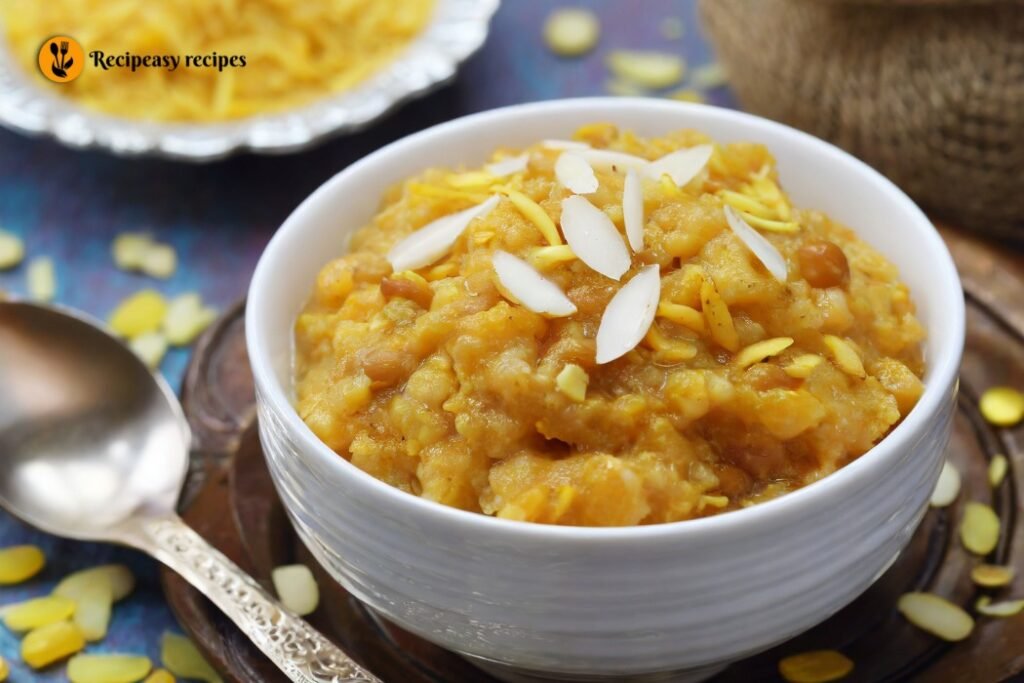
Why You Will Love Badam Halwa Recipe
You will love this Badam Halwa recipe because it perfectly balances richness and sweetness. Its aroma fills your kitchen, and the creamy texture delights every bite. The traditional version has a slightly grainy texture that feels authentic, while the almond flour version is smoother and quicker to make. Whether you’re preparing it for a festival, a family dinner, or simply as a special treat, this halwa guarantees happiness and satisfaction. Its simplicity, combined with indulgent taste, makes it a dessert everyone enjoys.
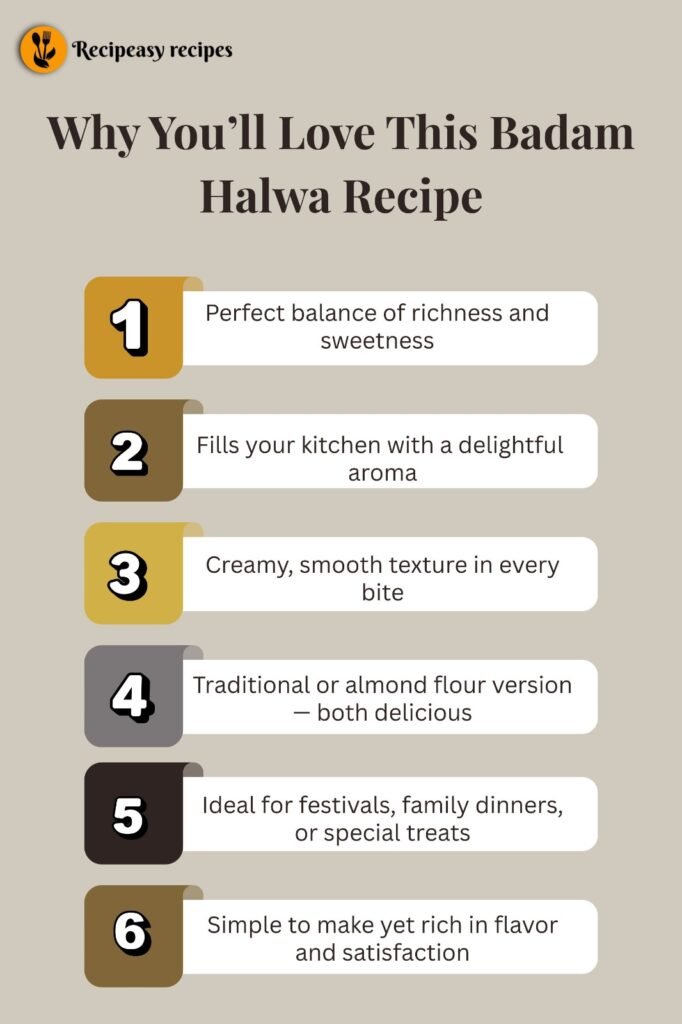
Equipment You’ll Need
To make this recipe successfully, you will need a few essential tools:
- Heavy-bottomed pan Ensures even cooking and prevents burning, which is crucial for halwa.
- Blender or food processor Used to grind almonds into a smooth paste for the traditional version.
- Spatula Helps stir continuously and scrape the sides to avoid sticking.
- Measuring cups and spoons Ensures accurate measurements for perfect taste.
- Serving bowl For presenting your halwa beautifully.
Having these tools ready makes the cooking process smooth and ensures your halwa comes out perfect every time.
Ingredients
Here’s a detailed ingredient list for both versions:
Traditional Almond Version:
- Almonds 1 cup (soaked overnight for soft, creamy paste)
- Ghee 1/2 cup
- Sugar 3/4 cup (adjust to taste)
- Cardamom powder 1/2 tsp
- Saffron strands a few (optional, for aroma and color)
- Water 1/2 cup
Quick Almond Flour Version:
- Almond flour 1 cup
- Ghee 1/2 cup
- Sugar 3/4 cup
- Cardamom powder 1/2 tsp
- Saffron strands optional
- Water 1/2 cup
Both versions produce a rich, aromatic halwa, but the almond flour version saves time while still delivering excellent taste.
How to Make Badam Halwa Recipe Step-by-Step Instructions:
- Soak and Peel Almonds (Traditional)
Soak almonds in warm water for 4–5 hours or overnight. This softens them, making it easier to grind into a smooth paste. After soaking, peel off the skins and blend almonds with a little water to form a fine paste. - Prepare Quick Almond Flour Version
If using almond flour, mix it with warm water to make a thick, smooth paste. This shortcut saves time while still delivering delicious results. - Heat Ghee
In a heavy-bottomed pan, melt ghee over medium heat. The ghee should be hot but not smoking, as it will add a rich aroma and prevent sticking. - Cook Almond Paste
Add the almond paste to the ghee. Stir continuously to prevent burning. Cook for 7–10 minutes until the raw almond smell disappears and the paste slightly thickens. - Add Sugar and Water
Dissolve sugar in water and gradually add it to the pan. Mix well to combine. Continue stirring to ensure the mixture is smooth and even. - Add Cardamom and Saffron
Sprinkle in cardamom powder and saffron strands. These aromatics enhance the flavor and give a beautiful golden color to the halwa. - Simmer and Stir
Reduce the heat to low. Keep stirring until the halwa thickens and begins leaving the sides of the pan. This step ensures a creamy, glossy texture. - Finish and Serve
Transfer the halwa to a serving bowl. Garnish with slivered almonds or saffron strands. Serve warm, or let it cool slightly for a firmer texture.
Nutrition Information
- Calories: 280 per serving
- Protein: 7g
- Fat: 20g
- Carbs: 18g
- Fiber: 3g
This makes Badam Halwa a rich, indulgent dessert, yet it also provides protein, healthy fats, and essential nutrients.
How to Serve This Recipe
Serve Badam Halwa warm in small bowls, garnished with slivered almonds or a few saffron strands. It pairs beautifully with puris, parathas, or even as a standalone dessert after meals. For special occasions, you can also serve it in decorative bowls with edible silver leaves for an extra festive touch.
Storage Tips
- Refrigerate in an airtight container for up to 5 days.
- Freeze in small portions for longer storage; thaw before serving.
- Keep container dry to avoid spoilage.
- Reheat gently before serving.
Benefits of This Recipe
- High in protein and healthy fats from almonds.
- Provides sustained energy and keeps you full.
- Gluten-free and vegetarian-friendly.
- Rich in antioxidants, vitamin E, and minerals.
- Can be customized to reduce sugar for a healthier version.
FAQs
Q1: Can I use almond meal instead of whole almonds?
A1: Yes, almond flour works perfectly for a quicker version while retaining the taste.
Q2: How long can Badam Halwa be stored?
A2: Store in an airtight container in the fridge for up to 5 days.
Q3: Can I make it sugar-free?
A3: Yes, use a sugar substitute like stevia or erythritol to make a healthier version.
Q4: Can I freeze Badam Halwa?
A4: Yes, freeze in small portions. Thaw before serving and gently warm it up.
Q5: What’s the best way to serve it?
A5: Serve warm with a garnish of slivered almonds or saffron strands. Pair with puris or parathas for a traditional touch.
Conclusion
Badam Halwa Recipe is a rich, creamy, and indulgent dessert that anyone can prepare at home. Whether you choose the traditional almond version or the quick almond flour variant, this recipe guarantees delicious results. It combines the natural richness of almonds, aromatic cardamom, and ghee into a dessert that is perfect for festive occasions or a special treat. Making it at home allows you to adjust sweetness and texture, creating a dessert that is not only satisfying but also full of love and tradition.
Badam Halwa Recipe – Rich, Creamy & Traditional Indian Dessert
Course: Sweet / Festive DessertCuisine: IndianDifficulty: Easy4–6
servings20
minutes35
minutes280 kcal per serving
kcalA rich and creamy almond-based Indian dessert made with ghee, cardamom, and saffron perfect for festivals and family gatherings.
Ingredients
- Traditional Almond Version:
Almonds 1 cup (soaked overnight for soft, creamy paste)
Ghee 1/2 cup
Sugar 3/4 cup (adjust to taste)
Cardamom powder 1/2 tsp
Saffron strands a few (optional, for aroma and color)
Water 1/2 cup
- Quick Almond Flour Version:
Almond flour 1 cup
Ghee 1/2 cup
Sugar 3/4 cup
Cardamom powder 1/2 tsp
Saffron strands optional
Water 1/2 cup
Directions
- Soak and Peel Almonds (Traditional)
Soak almonds in warm water for 4–5 hours or overnight. This softens them, making it easier to grind into a smooth paste. After soaking, peel off the skins and blend almonds with a little water to form a fine paste. - Prepare Quick Almond Flour Version
If using almond flour, mix it with warm water to make a thick, smooth paste. This shortcut saves time while still delivering delicious results. - Heat Ghee
In a heavy-bottomed pan, melt ghee over medium heat. The ghee should be hot but not smoking, as it will add a rich aroma and prevent sticking. - Cook Almond Paste
Add the almond paste to the ghee. Stir continuously to prevent burning. Cook for 7–10 minutes until the raw almond smell disappears and the paste slightly thickens. - Add Sugar and Water
Dissolve sugar in water and gradually add it to the pan. Mix well to combine. Continue stirring to ensure the mixture is smooth and even. - Add Cardamom and Saffron
Sprinkle in cardamom powder and saffron strands. These aromatics enhance the flavor and give a beautiful golden color to the halwa. - Simmer and Stir
Reduce the heat to low. Keep stirring until the halwa thickens and begins leaving the sides of the pan. This step ensures a creamy, glossy texture. - Finish and Serve
Transfer the halwa to a serving bowl. Garnish with slivered almonds or saffron strands. Serve warm, or let it cool slightly for a firmer texture.
Notes
- Always cook the halwa on low heat to prevent burning.
- Adjust sugar to taste; for a lighter version, reduce ghee slightly.
- Saffron and cardamom add aroma don’t skip them for authentic flavor.
- You can prepare it ahead and refrigerate for 4–5 days.
- For vegan version, use almond oil instead of ghee.
